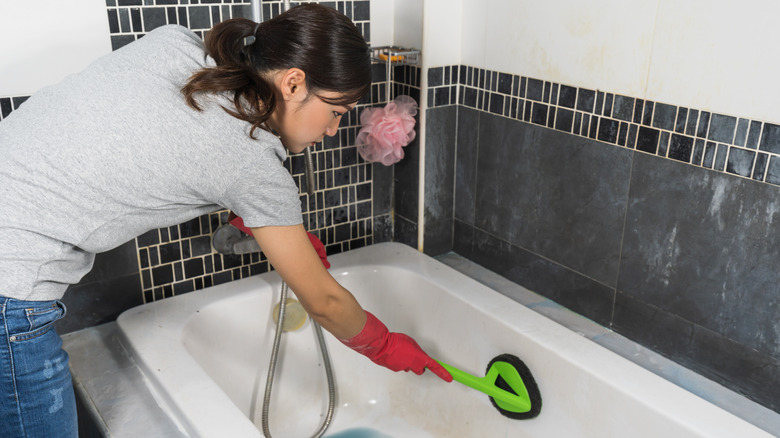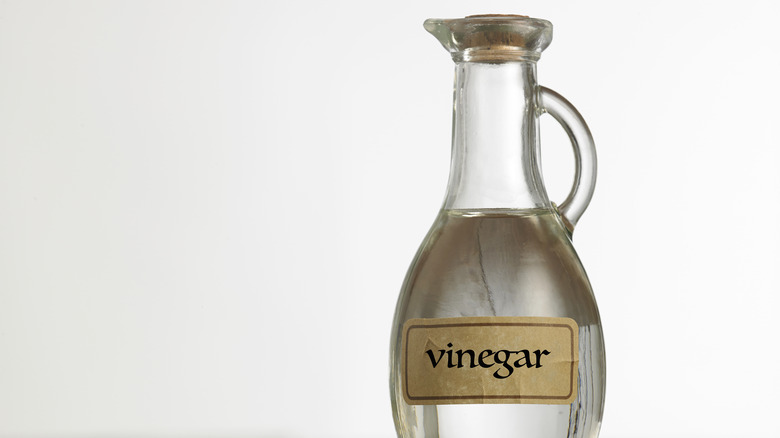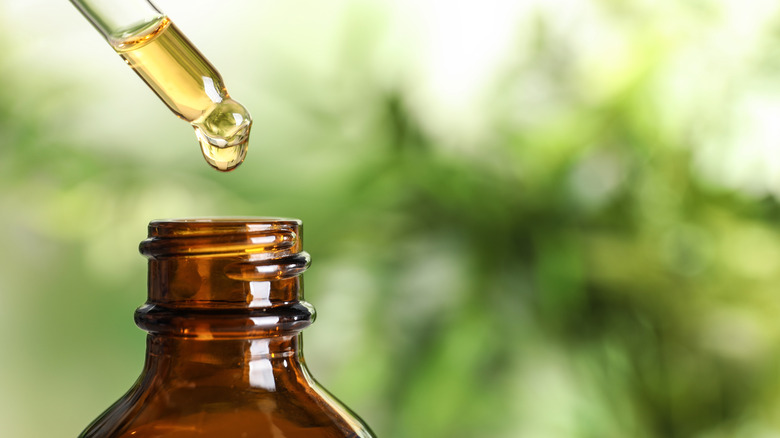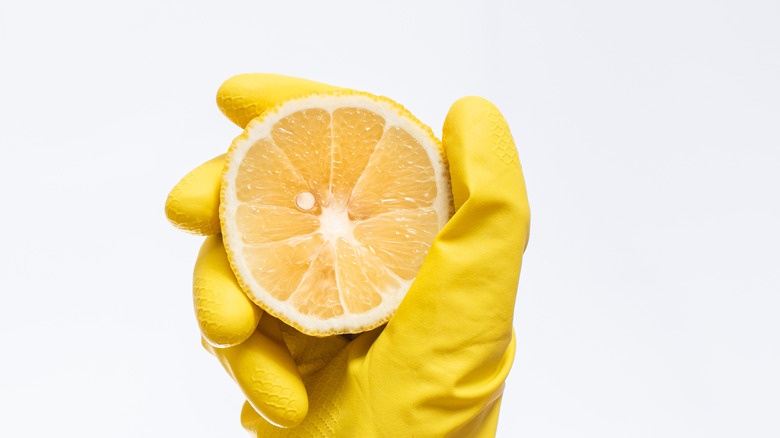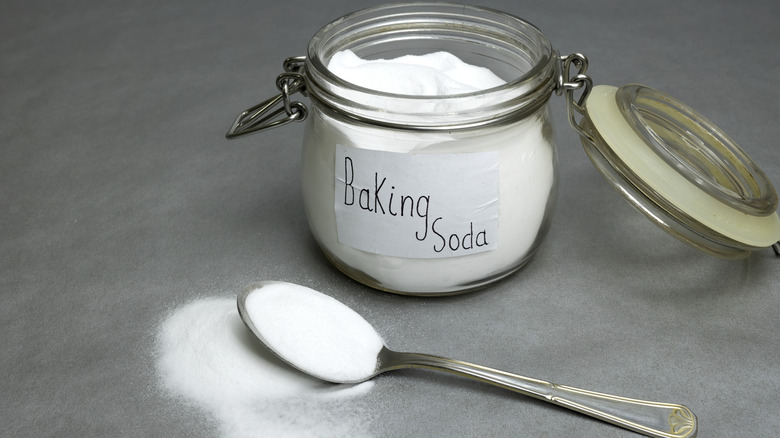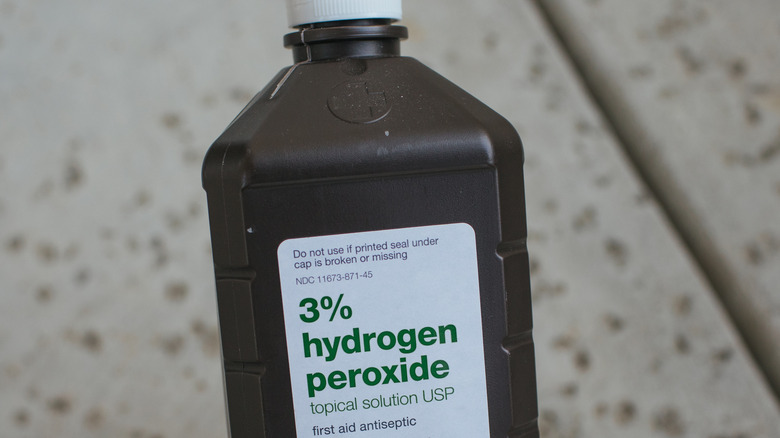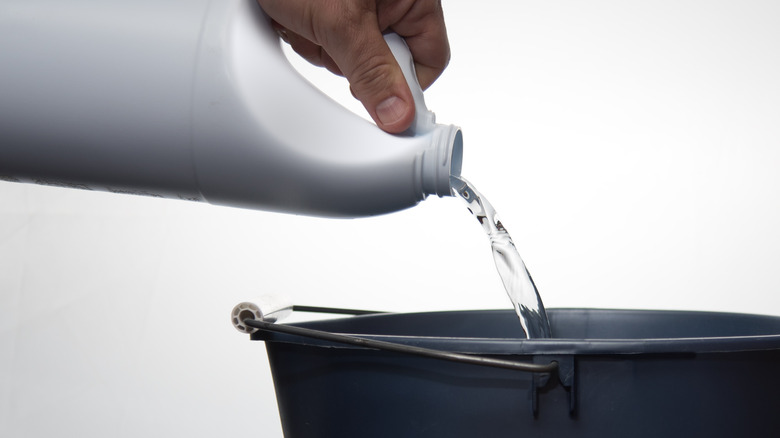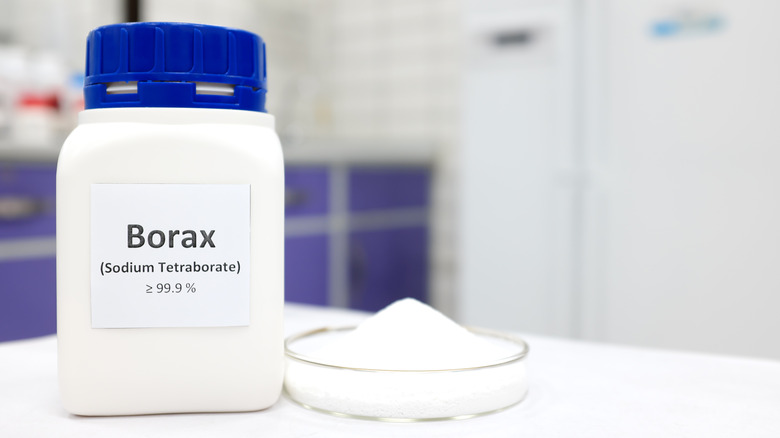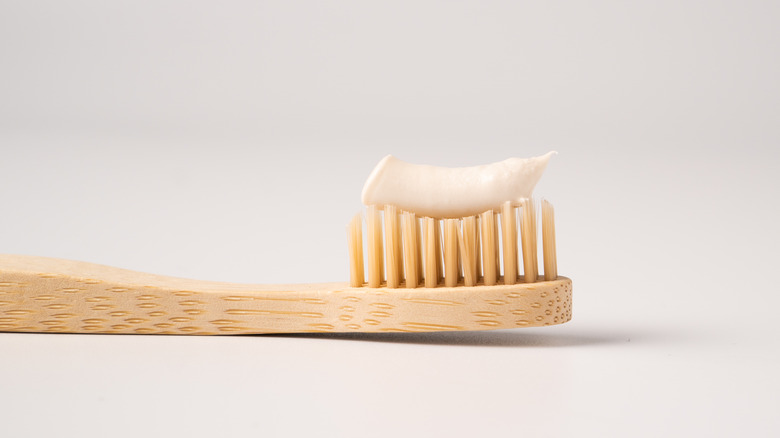8 Easiest Ways To Clean Mold
Whether it's in your bathroom or basement, you've probably had a run-in with mold. Not only is it unsightly (and sometimes stinky), mold can cause serious health problems if it's not dealt with properly. You also run the risk of letting it grow out of control, causing damage to your home that gets costly pretty quickly. There are many ways to be proactive about mold, and cleaning regularly is one of them. Sunlight is your first defense against its growth, and in humid climates, running a dehumidifier to help control moisture will help. But once you've spotted mold, good old elbow grease is your best bet at fighting it.
Avoid tackling dangerous molds — Modernistic recommends calling in a pro if it looks slimy and greenish-black. You might also want to enlist some extra help if the affected area is over 10 square feet, if you can smell it but cannot see the source, and if anyone in your home's health would be compromised by it. When it's a task you can handle on your own, it's best to err on the side of caution and wear a protective mask and gloves. These easy mold cleaners will help you get the job done.
1. Vinegar
Using vinegar to clean mold is eco-friendly, cost-efficient, and effective. According to Mold Help For You, its mildly acidic properties can eradicate mold on both porous and non-porous surfaces because it removes both the mold's top layer as well as its underlying membrane. But stick to white vinegar, since other choices like apple cider vinegar have sugar components that could promote mold growth.
To get started, fill a spray bottle with distilled white vinegar (and don't dilute with water). Spray the affected area until its very wet and let the vinegar sit for at least an hour. Next, use a scrub brush, sponge, or toothbrush to wipe away all traces of the mold. When you're finished, wipe the area down with warm water and let it dry completely. While its strong odor might offend your nose for a bit, it should disappear shortly. And if you can't stand the scent of vinegar, you can always mix in an essential oil to tone it down. The Spruce recommends using vinegar to clean mold off of leather and household appliances, like fridges, coffee makers, and washing machines.
2. Tea tree oil
Tea tree oil is another natural way to clean mold due to its antifungal properties, though it's a little more expensive. You'll also need to get the right kind. Damp Solving advises that its chemical makeup will need high terpinen-4-ol concentration (minimum 35%) to be effective against molds.
Make a cleaning solution by mixing 1 teaspoon of tea tree oil per every cup of water you need, then add it to a spray bottle. Spray on the impacted area and let it sit overnight. The next day, wipe with a clean cloth or towel — you can dunk it in vinegar for an extra boost against mold. Note that it might take a few applications to work. Treehugger also recommends spraying it on areas that get moldy, like shower tiles, without rinsing it off for a boost in mold protection. Tea tree oil can irritate skin, so be sure it handle carefully.
3. Lemon
Another inexpensive mold cleaner that comes right from your kitchen is lemon juice. Along with being environmentally friendly, it has a lighter, more agreeable odor than vinegar and tea tree oil. HomeSteady writes that lemon's mild acidity (made up with about 5% acid) makes it gentle on most surfaces.
Use undiluted lemon juice on harsher mold problems, or make a 50-50 diluted water-lemon juice spray to clean up mildew or light mold issues. Squirt onto the affected surface and let it sit for 10 minutes before washing it up with warm, soapy water. Let it dry completely. Lemon juice kills mold on shower curtains, garbage disposals, bathroom tiles, and some fabrics. To boost your lemon juice mold treatment, Eco Flood & Mold Remediation recommends mixing equal parts lemon juice and vinegar and adding in some baking soda to make a cleaning paste. You can also heat your lemon-water spray to increase its effectiveness.
4. Baking soda
Baking soda, or sodium bicarbonate, has many uses around the house, and now you can add mold-killer to the list due to its high pH. As an added bonus, baking soda is inexpensive, odorless, and non-toxic, making it safe for people and pets. Zumper writes that along with destroying mold, its drying properties suck up moisture, which inhibits future mold growth.
To make a baking soda cleaning solution, The Maids says to add 1/4 tablespoon of baking soda to a spray bottle filled with water and shake it to mix. Spray the moldy surface and then scrub the mold with a scouring pad, sponge, or brush. Wipe the surface dry and spray again lightly, this time leaving the solution on to prevent mold from growing back. For tough areas, The Maids recommends a baking soda paste made from 2-parts baking soda, 1-part water, and 1-part vinegar. Let the paste dry on moldy spots before scrubbing it off.
5. Hydrogen peroxide
Hydrogen peroxide can be found in most medicine cabinets, which comes in handy if you have a mold problem. Per The Maids, hydrogen peroxide has many uses given its antifungal, antiviral, and anti-bacterial properties. The Spruce notes that it is as effective (while a little slower-working) as bleach, but minus harmful fumes or residue.
If you'd like to try out cleaning mold with hydrogen peroxide, pour a 3% solution directly into a spray bottle. Test-spot a small area to make sure it doesn't cause damage or discoloration. Spray the peroxide onto the moldy areas until they are very wet and let it sit for 10 minutes. Scrub the mold off and wipe the area dry when you're done. The Spruce recommends using hydrogen peroxide to clean mold off books and papers, and The Maids notes that it can be used to clean mold on kitchen appliances, countertops, bathtubs, hard flooring, and some wall surfaces.
6. Bleach
Bleach is commonly marketed as one of the most powerful methods to eradicate mold, but it only works in certain circumstances. Healthline writes that it won't have long-term effects on porous surfaces, like drywall or wood, because mold roots deeply into them, and bleach will only take care of the topmost layer. On non-porous surfaces, like porcelain bathtubs and tile, bleach will work wonders.
Household or chlorine bleach must be diluted, even when fighting tough patches of mold. Make sure to ventilate the area you are working in by turning on a fan and opening windows to protect yourself from bleach fumes. Mix 1 gallon (16 cups) of water with 1 cup of bleach and add to a spray bottle. Spritz the diluted bleach onto any moldy areas and let it sit before putting in some elbow grease. Scrub the affected areas and then rinse and air dry. Healthline recommends throwing away cloths and sponges used to clean the mold.
7. Borax
Like baking soda, borax's high pH prevents mold growth when you use it to clean. It's a pretty inexpensive solution to mold issues as well, and The Spruce says it's even better at removing mold stains than baking soda. That said, though it's generally safe to use and will not emit fumes or harsh chemicals, borax is toxic if you ingest it, so be extra careful while handling borax if young children and pets are afoot.
Per Hunker, you can make a simple borax solution to treat mold problems by mixing 1 cup of borax with one gallon (16 cups) of water. Dip a scrub brush into the solution and go to town on the moldy surface, wiping it clean with a cloth once you've scrubbed the mold off. When you're done, Zumper recommends leaving borax residue on the wall to prevent mold growth, and to let it dry naturally.
8. Toothpaste
Toothpaste isn't only great at removing stains from your teeth — it's also not bad at lifting mold stains. Solid white toothpastes are best at cleaning up tough mold spots (and they won't leave new stains behind like gel ones can), Eco Flood & Mold Remediation writes, and Mrs. Laundry adds you should use one with whitening properties. You can scrub it on molds found in bathrooms — tiles, sinks, showers, and ceilings — or on other hard surfaces, but use caution on how hard you scrub on softer materials (and make sure you test spot).
To use toothpaste to clean up mold and mold stains, moisten the bristles of a cleaning toothbrush with water. Squeeze some toothpaste on top and gently scrub the moldy spot. Depending on the surface, you may be able to scrub vigorously. You can also use a cleaning cloth smeared with toothpaste for delicate surfaces. When you're finished, wipe down the surface with a dry cloth.
